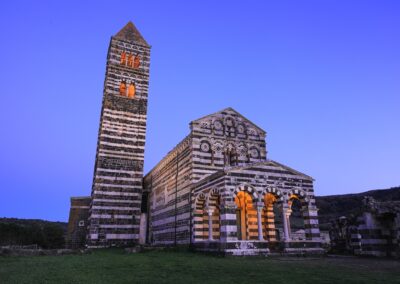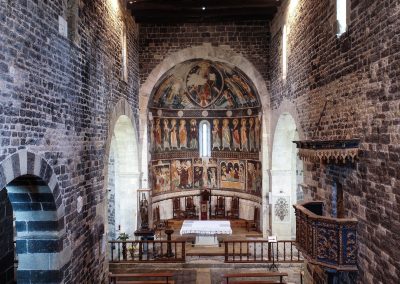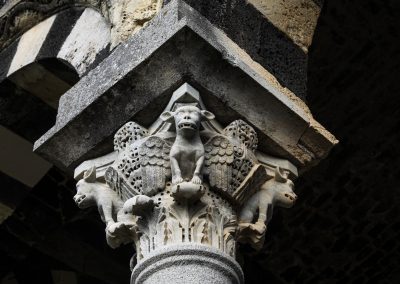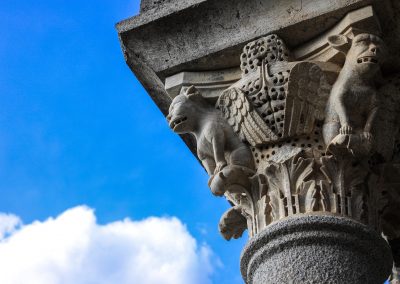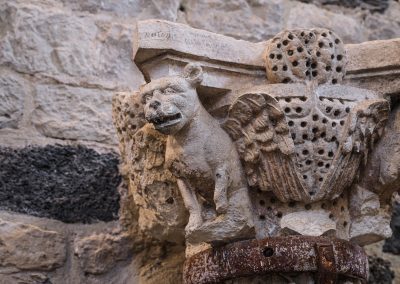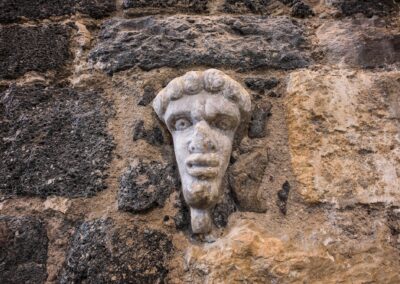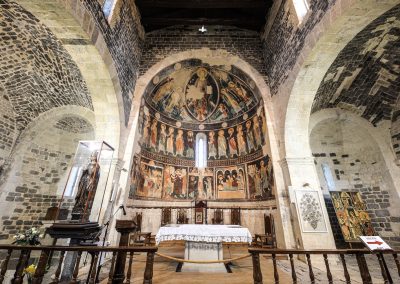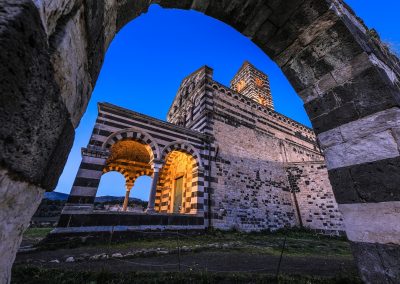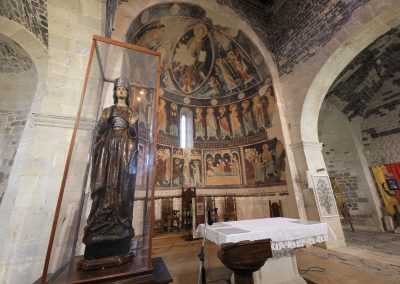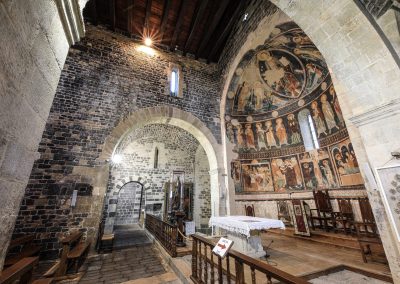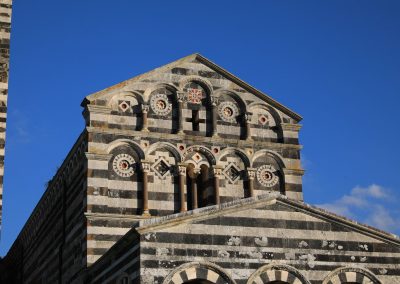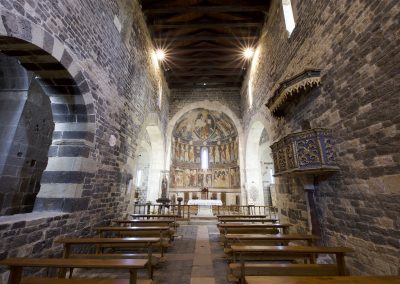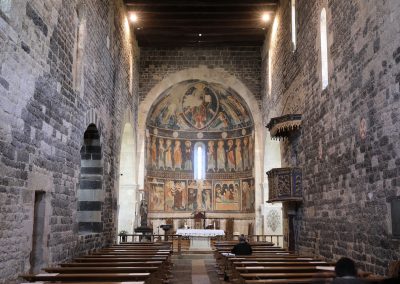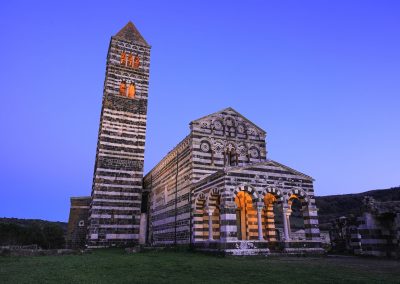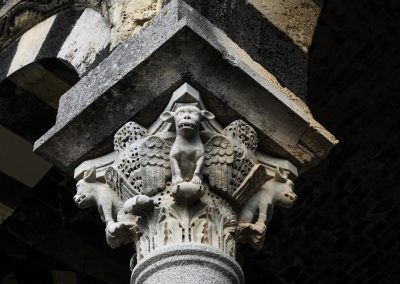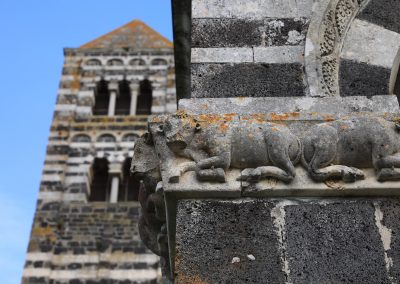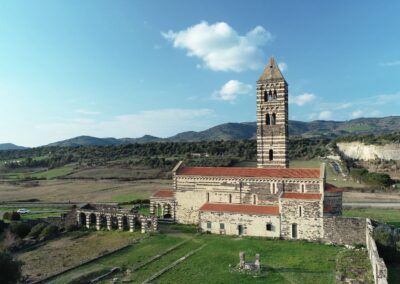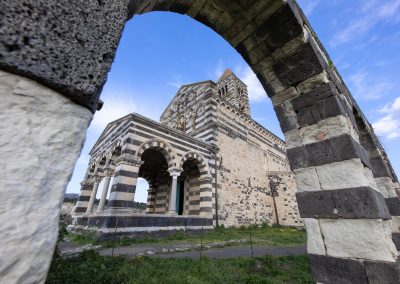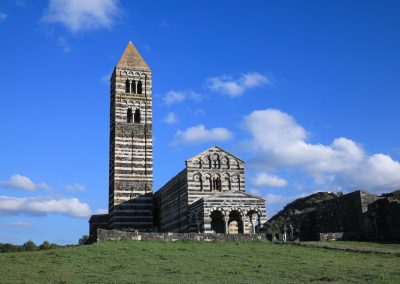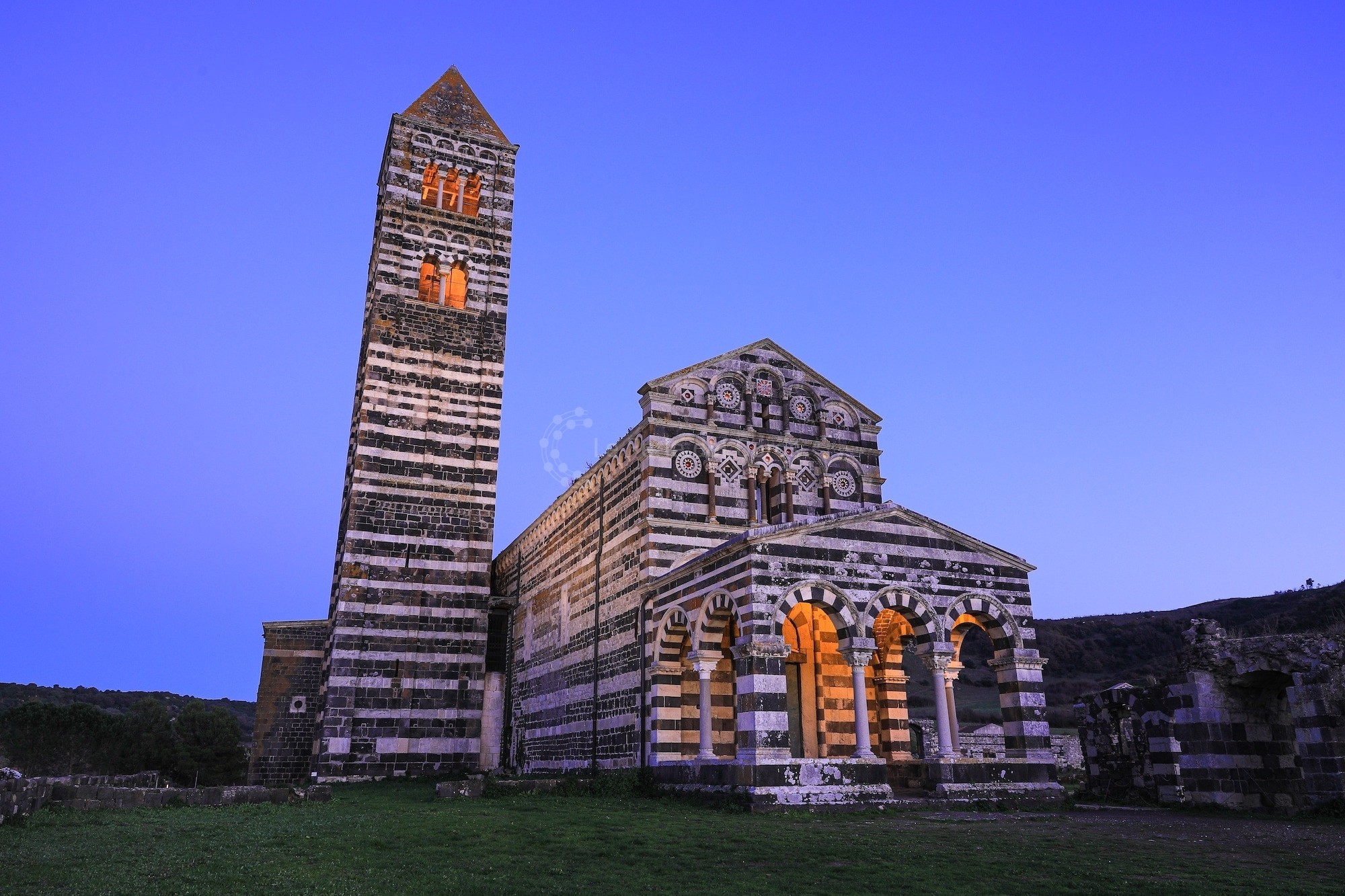
Codrongianos
Church of the Holy Trinity of Saccargia
The Church of the Holy Trinity of Saccargia is surrounded by a green valley in the territory of Codrongianos. It is one of the most admirable examples of Pisan-Romanesque architecture in Sardinia. The church and the monastery of Saccargia were founded by the king of the Judgedom of Torres Constantine I of Lacon-Gunale and by his wife Marcusa de Gunale. According to the “Condaghe of the Consecration of the Abbey of the Holy Trinity”, (tn* a condaghe is a register of the Church’s belongings in Medieval Sardinia) the consecration of the church took place on 5th October 1116. Historical sources say the church was built by Pisan masons and belonged to the Benedictine monks of the Camaldolese order, together with the annexed monastery. The abbatial complex was abandoned by the Camaldolese order at the end of the 14th century. In fact, the last act regarding the abbey as a monastery dates back to 1384. The architectural complex is a mix of different colours and styles, such as Tuscan, Lombard, Byzantine and Islamic. The church is entirely made of white limestone alternated with black volcanic rocks. The building has a T-cross plan, formed with a transept and a long nave with a wooden roof. There are three apses attached to the transept, with a single lancet window each. The sacristy is located north, flanking and connecting to the transept. It has five lancet windows. Westwards, there is the bell tower, with a square plan and entrance from the transept. The latter is characterised by half pilasters, corner pilasters, hanging arches and hollows for ceramic basins. The façade is preceded by a portico with a cross vault comprising columns and large pilasters, and is divided into three orders. The two upper ones are distinguishable by the fake loggia with five arches, at the centre of which there are hollows for ceramic basins and decorative motifs of concentric circles, with triangular carvings and stepped lozenges, typical of Pisan-Romanesque architecture. At the centre of the upper order there is a cross-shaped window, while in the middle there is a twin lancet window. In the bottom order there is the main entrance, with a relieving arch decorated by bicolour wedges. On the southern side of the church we find the monastery of which you can admire the perimeter walls, the eastern cloister containing a well and a series of open rooms facing a wide courtyard. On the capitals, the frames and the archivolts there are sculptures of remarkable artistic and stylistic interest, with plant-based and zoomorphic motifs. For instance, on the portico on the frame of a corner pilaster, there are two bovines on their haunches sitting next to each other, while on the capitals of the central columns and on one kept inside the nave, there are monstrous winged animals sitting on acanthus leaves. The archivolt of the central arch is ornamented with a line of animals, and those of the lateral arches with plant shoots and palms. Inside the building there is an important set of Romanesque frescoes painted inside the semi-cylinder of the central apse. These paintings of the church of Saccargia are divided into four sections. In the lower part there are fake curtains over which scenes of Christ’s life are presented. On the far left from the viewer, there is a frame showing a kneeling bearded figure in front of Saint Benedict, followed by the Last Supper, Judas’s kiss, the Crucifixion, the Entombment of Christ, and the Descent into Hell. On the upper part, the Virgin Mary and Saint Paul are near the lancet window, surrounded by the Apostles. In the apse basin one can admire Christ as Judge surrounded by angels and seraphs. The frescoes of Saccargia are attributed to the second half of the 12th century. At the beginning of the 20th century, the whole building was subject to consistent renovation work made by the engineer Dionigi Scano. The portico has been lowered to allow a better view of the façade, and many of the decorative elements have been duplicated and the original have been kept inside the church.
Source: Codrongianus, Church of the Holy Trinity of Saccargia, Sardinian Cultural heritage; Autonomous Region of Sardinia (in Italian).

